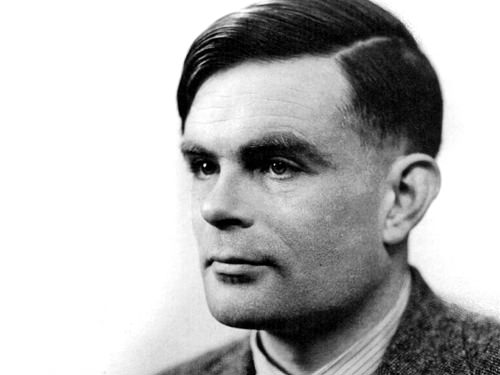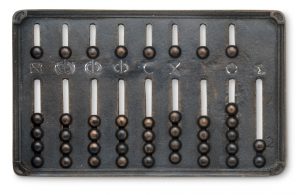What is a computer?
A computer is a programmable machine based on two principal characteristics: It responds to a specific set of instructions in a pre-defined manner, and it can execute a pre-recorded list of instructions, also known as a programme. The device accepts information and processes the data according to this list of instructions, or programme.
What Is The Origin Of The Computer
Etymology
The Oxford English Dictionary lists the first known use of the word ‘computer’ as being in 1613, used by English writer Richard Braithwaite: “I haue read the truest computer of Times, and the best Arithmetician that euer breathed, and he reduceth thy dayes into a short number.”
The context of its use in this instance was to describe a person who carried out calculations or computations. It was only from the end of the 19th century that the word began to take on its modern-day meaning, a machine that carries out computations.
 Early Origins of The Computer – History of Computers
Early Origins of The Computer – History of Computers
Since ancient times, manual devices have aided people in doing calculations. Take the abacus. The Roman abacus was developed from Babylonian devices dating back as far as 2400BC. From then, many other forms of reckoning boards or tables have been invented.
In a medieval European counting house, a checkered cloth was placed on a table with counters on top of it. The counters were then moved according to certain rules as an aid in counting sums of money.
The first analogue computer – a computer that operates with numbers represented by directly measurable quantities (such as voltages or rotations) – was called The Antikythera Mechanism and was used to calculate astronomical positions. Discovered in 1901 in the Antikythera wreck off the Greek island of Antikythera, the device has been dated to circa 100BC. Interestingly, comparable devices of a comparable complexity would not appear until 1000 years later.
First Computing Device
 The concept of a programmable computer came from an English mechanical engineer, Charles Babbage, considered the ‘father of the computer’, in the early 19th Century. After working on his revolutionary ‘Difference Engine’ designed to aid in navigational calculations, in 1833 he conceptualised the ‘Analytical Engine’ that had a much more general design. Data input to the machine was done through punched cards. For output, the machine would have a printer, curve plotter, and bell.
The concept of a programmable computer came from an English mechanical engineer, Charles Babbage, considered the ‘father of the computer’, in the early 19th Century. After working on his revolutionary ‘Difference Engine’ designed to aid in navigational calculations, in 1833 he conceptualised the ‘Analytical Engine’ that had a much more general design. Data input to the machine was done through punched cards. For output, the machine would have a printer, curve plotter, and bell.
All the parts were made by hand, this being a real issue with a machine consisting of thousands of parts. Eventually, the British government rescinded their funding of the project due to Charles Babbage constantly changing/developing the design, which was meant to add sophistication to the device – the device itself was considered 100 years ahead of its time. Eventually, in 1988, Charles Babbage’s son, Henry, completed a simplified version of the ‘Analytical Engine’, considered the world’s first computer.
The Modern Computer
In 1936, Alan Turing developed what is considered the modern computer in his seminal paper, ‘On Computable Numbers’. The simple device Turing proposed was named the ‘Universal Computing Machine’ – now known as a Universal Turing Machine. The machine computed anything that was computable by executing instructions (a programme) stored on tape. This made the machine programmable. The fundamental ingenuity behind Turing’s machine was the stored programme, where all the instructions for computing are stored in memory.
The first mainframe computer was the Harvard Mark I, developed starting in the 1930s and completed in 1943. It weighed five tons, filled an entire room, and cost about $200,000 to build, which is equivalent to roughly $3,070,500 in 2020 dollars. Another early mainframe computer was the IBM 701, announced in 1952. Howard Aiken, a Harvard researcher, proposed the idea of a large-scale calculator that could solve a set of non-linear equations, which led to the development of the Harvard Mark I.
Completed in 1945, the Electronic Numerical Integrator and Computer, or ENIAC, was the first programmable computer built. It was an general-purpose, electronic digital computer. This really was the starting origins of digital computers, as we know them today.
It was built by a large group of electrical engineers, computer scientists and programmers at the university of pennsylvania. The ENIAC was the only computer with all of these features, though other computers had some combinations of them. Through reprogramming, it was able to solve “a large class of numerical problems” and was Turing-complete.
These early computers were the first of their kind, and subsequently took up large amounts of space.
Ferranti Mark I, a British company, is likely credited with creating the “first commercially available general-purpose computer” when it sold Manchester University its first Mark I computer. The first commercial computer to use a moving-head hard disc drive (also known as magnetic disc storage) for secondary storage was the IBM 305 RAMAC.
Personal Computer
As technology developed and companies like IBM were able to improve efficiencies, and subsequent costs of production, they were able to create and bring the computer to people’s homes. In 1981, IBM released their product ‘Acorn’, which was their first personal computer with a with a colour display, two floppy drives, and an Intel CPU. Then in 1983, the Gavilan SC was created, which was the first portable computer with a flip-form design, it was the origin of the laptop.
The personal computer has transformed the way in which we live our lives. From the desktop computer, to laptops, tablets and smartphones. Nowadays, it is used in many different applications, from business to leisure. It has revolutionized the way in which people communicate, allowing for instant messaging, video calls, and social media interactions.
The personal computer has made it easier for people to work remotely, conduct online shopping, and access information from around the world.
Artificial Intelligence
The newest development in computing is artificial intelligence (AI), which is set to further transform the way in which computing and AI shapes our day-to-day lives. AI has the potential to automate tasks, improve decision-making processes, and enhance productivity in various industries. As technology continues to advance, the personal computer will undoubtedly continue to play a vital role in how we interact, work, and live our lives.
Interesting Facts – Computer Origin
Computers of the 1940s used large amounts of electricity and were the size of a large room.
Computers as we know them today only really took shape in the 1980s
In 1980, the first 1Gb disk drive was released. It cost $40,000 US and weighed nearly 230 kilograms. 1Gb equates roughly to a modern-day HD movie.
The first ever video games made in the US were called Asteroids and Lunar Lander in the 1980
Over 6,000 computer viruses are released each month
The first computer mouse was made of wood.
Did you know that you blink 20 times a minute? However, staring at a computer screen, that reduces to 7.
Working at a computer all day, your hands will travel around 12 miles.
From the earliest origins of the computer right through to the mega processors of today, transcription has always been close by!
That concludes our history of computing, we hope that you’ve enjoyed reading this article.

 Early Origins of The Computer – History of Computers
Early Origins of The Computer – History of Computers


